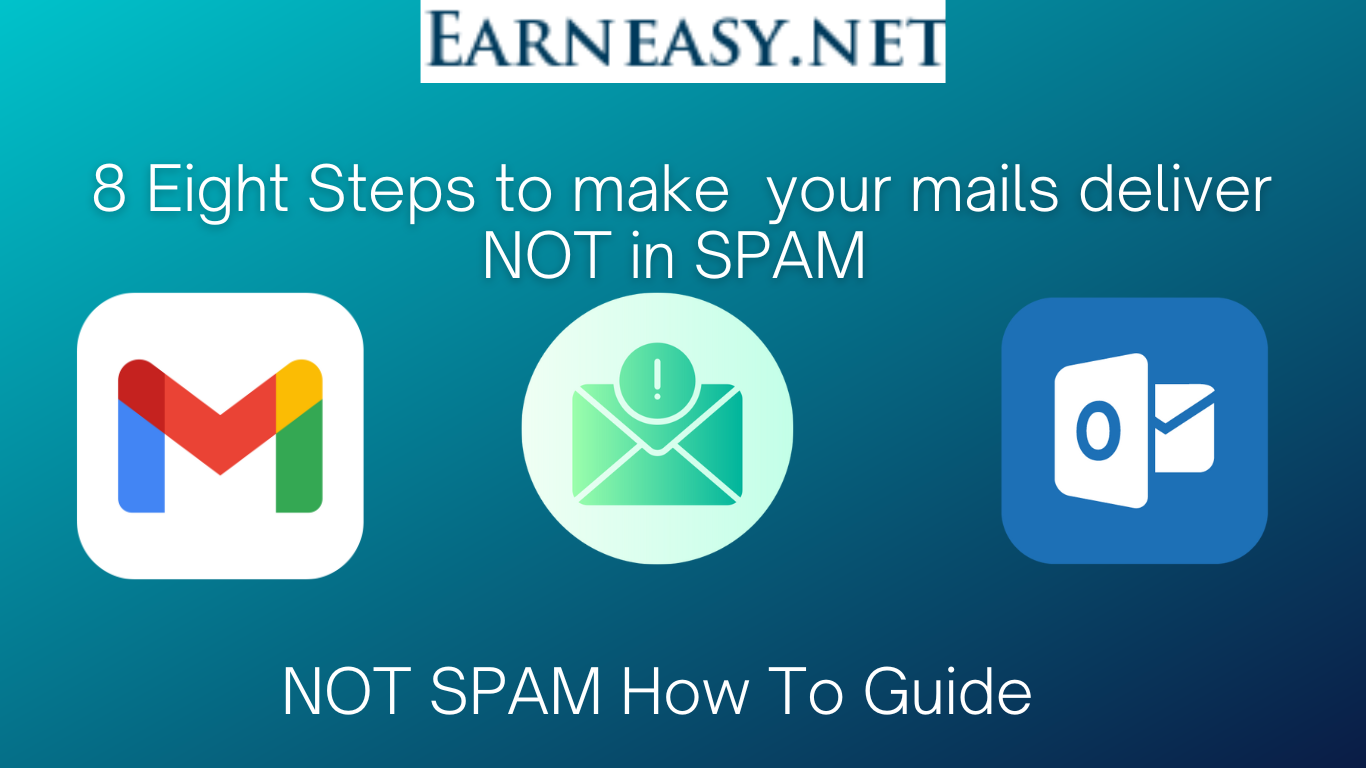8 Eight easy steps to make your mails deliver NOT in SPAM
prevent emails from going to spam gmail
When emails end up in the SPAM folder, it can be frustrating and impact your ability to communicate effectively. Several factors can contribute to this issue. Here is a list of common reasons why emails may be delivered to the SPAM folder, along with some advice to improve your email deliverability:

- IP reputation: If the IP address used to send your emails has a poor reputation due to previous spamming activities, it can trigger SPAM filters. Consider using reputable email service providers (ESPs) with good IP reputations.
- Poor sender authentication: Ensure that you have properly set up Sender Policy Framework (SPF), DomainKeys Identified Mail (DKIM), and Domain-based Message Authentication, Reporting, and Conformance (DMARC) records. These authentication methods help verify that you are a legitimate sender and reduce the chances of your emails being marked as SPAM.
- Unoptimized email content: SPAM filters analyze the content of your emails. Avoid using excessive capitalization, exclamation marks, or spammy phrases that trigger these filters. Be careful with attachments, too, as some file types are more likely to be marked as SPAM.
- High complaint rates: If recipients frequently mark your emails as SPAM, it negatively affects your email deliverability. Ensure that your recipients have actively subscribed to your emails and provide clear instructions on how to unsubscribe if they no longer wish to receive them.
- Inactive email list: Sending emails to addresses that haven’t been engaged with for a long time can increase your chances of being marked as SPAM. Regularly clean your email list, removing inactive or bouncing addresses.
- Absence of opt-in confirmation: Implement a double opt-in process, where subscribers confirm their subscription by clicking on a verification link in an email. This ensures that the email addresses on your list are valid and reduces the chances of SPAM complaints.
- Poor sending practices: Sending a high volume of emails in a short period, especially from a new or unfamiliar IP address, can trigger SPAM filters. Gradually increase your sending volume to establish a positive sending reputation.
- Blacklisting: Check if your IP address or domain is blacklisted by popular SPAM databases. If it is, take appropriate steps to remove it from the list and improve your sending practices.
To improve email deliverability, here are some additional tips:
- Monitor your email delivery rates and SPAM complaints regularly.
- Use a dedicated IP address for sending emails to maintain a good sending reputation.
- Personalize your emails and send relevant content to engage recipients.
- Regularly update your email list to remove invalid or inactive addresses.
- Encourage recipients to add your email address to their contacts or whitelist to prevent future emails from being marked as SPAM.
- Test your emails using various SPAM filter testing tools before sending them to identify potential issues.
Remember, improving email deliverability takes time and consistent effort. By following these guidelines and maintaining good sending practices, you can minimize the chances of your emails ending up in the SPAM folder.

